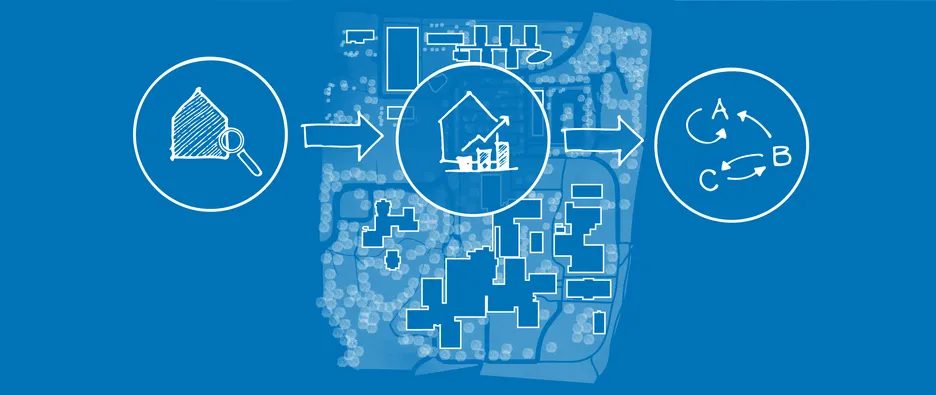Life Science Campus Martinsried of the Max Planck Society
Development of a resource-saving and energy-efficient district concept and development of a sustainable strategy for the buildings of the Max Planck Society at Martinsried
Through a holistic approach, the planning of the Max-Planck Research Campus in Martinsried is intended to implement an innovative, environmentally compatible building and energy concept with special demands on functionality and flexibility. To ensure a sustainable concept, the aim is for the buildings to have a life-cycle-based positive ecological impact on humans and nature in terms of resources, biodiversity and emissions.
As part of the design of buildings with positive ecological impacts, the following goals are sought:
- the building should generate more energy than it consumes on a life-cycle basis
- energy supply should be CO2 neutral and use 100% renewable energies
- planning and use of circular building construction
- comfort and health of the building users should be ensured within the best possible research environment
- adaptability to different uses for the defined research areas of the institutes should be ensured
- the impact on the local and global biosphere should be positive
To achieve these goals the following approaches are taken:
- innovative and flexibly optimizable building and energy concept with technical systems for heating, ventilation and cooling as well as integrated building automation with special consideration of a comfortable indoor climate
- utilization of available energetic potentials for the neighborhood in connection with an "urban" design
- in addition to innovative and sustainable aspects, a technically and economically feasible energy supply for the area should also be demonstrated
- consideration of interactions and synergies between building, building services and users
- early scientific support for the identification and use of energy saving and optimization potentials
- life-cycle based evaluation already in early planning phases with regard to grey energy and emissions
- in addition, buildings are to be created that are operated without a performance gap (discrepancy between the planned and actual energy efficiency of a building).
These approaches are to be implemented and tested as a model project at the new Max-Planck Campus for Life Sciences in Martinsried in order to draw conclusions for future planning concepts and projects of the MPG.
